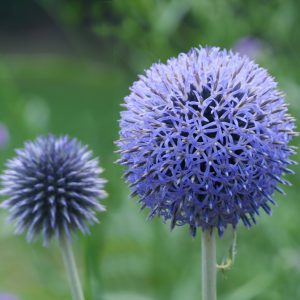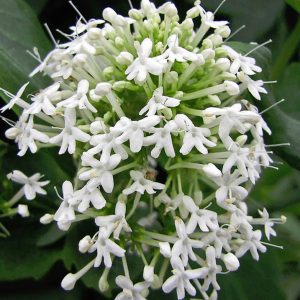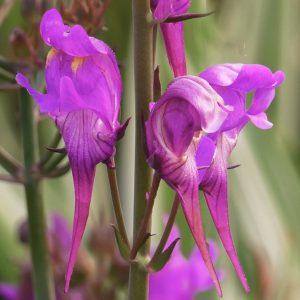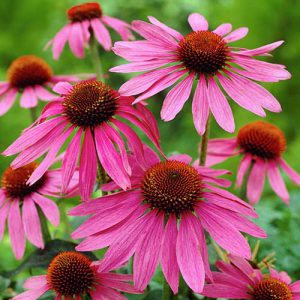- 1-9 pkts $4.50
- 10 pkts FREE
- Express post $12
Aquilegia discolor
DWARF SPANISH COLUMBINE
Aquilegia discolor has large flowers of rich blue and white, but on a dwarf plant.
Large blooms on a dwarf plant
This dear little Dwarf Spanish Columbine blooms prolifically from spring into summer.
But on a compact clump of pretty, grey-green scalloped foliage. H
Hardy treasure from Spain
Aquilegia discolor is a hardy, evergreen perennial.
Because it is both frost and heat hardy, and well acquainted with bright sunshine from it’s native habitat in northern Spain.
And it also tolerates some periods of dry, once established.
So plant dwarf Aquilegia discolor in Shade to ½ Shade to Sun.
Where it makes a pretty feature in the front in the flower bed, or in a pot.
Because the foliage is always dainty and pretty, even when it is not in flower.
Dwarf perennial clump growing to approx. 15cm High in bloom x 25cm Wide of pretty ferny foliage.
(Syn A. pyrenaica ssp. var. discolor)
SEED SOWING ADVICE:
Sow seeds any time indoors in punnets / or scatter directly in garden in autumn and winter.
Aquilegias germinate easily in the garden after chilling by the cold of winter.
INDOORS: Sow seeds on the surface of good quality seed raising mix.
Then barely cover the seeds with sieved mix.
Because these seeds need light to germinate.
Now thoroughly moisten the punnet by standing in a shallow water bath. Allow the moisture to percolate up to the surface of the mix from below.
Then place the sown punnet in a warm, well-lit position (not in direct sunlight)
Temperatures of 15- 24C approx. are ideal for rapid and optimum germination.
Seedlings may begin emerging as soon as 10 days, but within 21-28 days.
However if there is no germination after 4 weeks it means the seeds are dormant and require a period of chilling.
So wrap the moist, sown punnet in cling-wrap and keep in fridge (not freezer) for 4-6 weeks.
Then return to a well lit position at 15-24C for germination.
However do not discard the punnet as seeds will continue to germinate for a staggered period after the chilling.
SEED COUNT: 12 seeds per pack approx.
(We always aim to exceed the stated seed count and give a generous serve).
GROWING: Aquilegia discolor
Height with flowers: 15cm. High branching flower stems with flocks of double flowers.
Width: 25cm. Wide evergreen clump of ferny foliage.
Position: Plant in a shaded, semi shaded, to sunny position. Aquilegias thrive in the dappled shade under trees and shrubs, and under deciduous trees.
However this hardy variety from Spain can also thrive in full sun, but it will need more mulch in hotter areas.
Growth: Hardy and long-lived, evergreen perennial clump.
And plants will also self-seed babies around themselves in suitable conditions.
Hardy & Easy to grow
Soil: Aquilegia can thrive in a variety of soils, from sandy to clay based. And they can cope with pH on either the acid or alkaline side of neutral.
Soil enriched with compost and mulch is perfect.
However all soils must be well drained because Aquilegia hate being waterlogged.
Frost: Very frost hardy. Aquilegia plants are able to cope with hard frosts, down to at least -15C, depending on conditions.
Water-wise
Water: Aquilegias are not thirsty, water-demanding plants. Especially when they are grown in their preferred positions in the semi-shade under trees and shrubs. Here they can resist periods of dry, requiring no more than average garden watering in warmer periods.
Versatile for pots garden & cut flowers
Pots: Aquilegia vulgaris plena is lovely in a decorative pot, where both flowers and foliage contribute.
Cut Flowers: Aquilegia vulgaris plena gives plenty of excellent cut flowers for a vase. With striking flowers and long strong stems. Cut blooms can last for up to 2 weeks indoors.
Bees & Birds: The flowers provide nectar for bees, and are also visited by butterflies, moths, and other beneficial pollinating insects.
Low care
Care & Maintenance: Easy care, low maintenance plant.
If you wish to prevent baby Aquilegias from popping up you can trim off spent flower stems.
Or you can leave seed pods to self-sow more babies around the parent plant. Aquilegias are never annoying or a nuisance.
Fertilizer: Fertilizer can be applied in spring and autumn.
We also recommend to water in with fish or seaweed products at planting.
Pruning: You can cut the clump back to the socks to re-generate fresh, new leaves if necessary. However, Aquilegia do not need any regular pruning other than to trim off spent flower stems once a year.
Avoided by rabbits and deer
Pests & Diseases: Rarely troubled by any pests or diseases.
Deer & Rabbit resistant: Aquilegia have an unpalatable taste to both rabbits and deer because of compounds in the leaves. So the chewing pests tend to leave Aquilegia plants alone.
Herbal, History & Uses
Herbal uses: Aquilegia vulgaris was historically used for herbal medicine by treating infected wounds with teas and poultices.
However, the consumption and internal use of Aquilegia is not recommended by modern science. Thankfully deer and rabbits seem to know this too.
While the most popular historic use of Aquilegia was as a treatment treating head lice. So seeds would be ground up and rubbed into lice-ridden hair.
Happily, our modern chemists have less labour-intensive treatments on their shelf.
History: The name Aquilegia originates from Latin where the word for eagle is “aquila”.
So Aquilegia because the shape of the spurred flower does indeed resemble the claw of an eagle.
The common name “Columbine” also comes from Latin where the word “columba” means “dove”. So when we call them Columbines, we refer to an Aquilegia bloom resembling five doves billing and cooing together.
Origin: Aquilegia discolor is native to the sun drenched stony slopes of the Pyrenees region in northern Spain.
Click here for Nursery Open Days & Open Gardens Information
https://www.gardivalia.com.au/open-gardens
Click here to go back to Seeds Shop
https://www.seedscape.net.au/shop/
Related products
-
Add to WishlistAlready In WishlistAdd to Wishlist
-
Add to WishlistAlready In WishlistAdd to Wishlist
-
Add to WishlistAlready In WishlistAdd to Wishlist
-
Add to WishlistAlready In WishlistAdd to Wishlist





